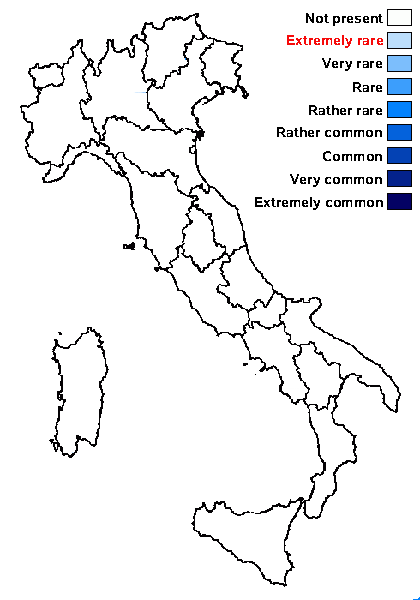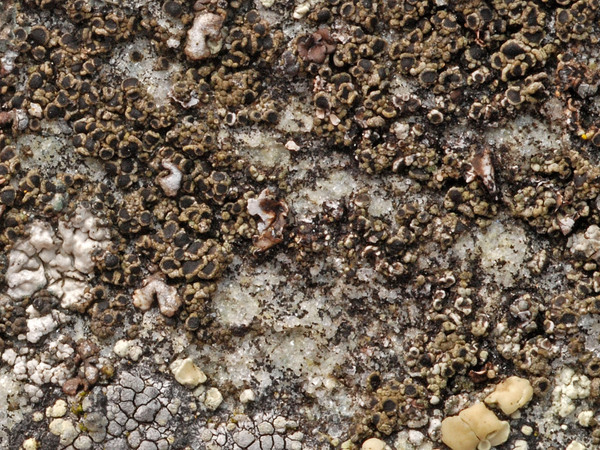Amandinea cacuminum (Th. Fr.) H. Mayrhofer & Sheard
Mycotaxon, 82: 438, 2002. Basionym: Rinodina sophodes (Ach.) A. Massal. f. cacuminum Th. Fr. - Lich. Scand., 1: 201, 1871
Synonyms: Rinodina cacuminum (Th. Fr.) Malme non (A. Massal.) Anzi
Distribution:
Description: Thallus crustose, episubstratic, of convex irregular warts, dull medium to dark brown, usually poorly visible, the warts being almost all occupied by an apothecium. Apothecia lecanorine or cryptolecanorine, black, developing on the thalline warts, 0.3-0.6 mm across, usually crowded, constricted at base to broadly attached, with a flat disc and a thin, entire, flexuose and persistent thalline margin which is rarely undeveloped, exposing the proper margin. Proper exciple thin, hyaline or brown in outer part, more or less of the aethalea-type; epithecium dark brown; hymenium colourless, 60-80 μm high, paraphyses 2-2.5 μm thick at mid-level, the apical cells 5-6 μm wide, heavily pigmented; hypothecium colourless to dark brown in old apothecia, up to 80 μm high. Asci 8-spored, clavate, Bacidia-type. Ascospores 1-celled, brown, subcylindrical, straight or slightly curved, (10-)12-15(-17) x 6-8.3 μm, Buellia-type, thin-walled throughout, the septum prominent. Pycnidia rare, black. Conidia thread-like, 15-20 μm long. Photobiont chlorococcoid. Spot tests: K-, C-, KC-, P-, UV-. Chemistry: without lichen substances.Note: on large siliceous boulders frequently visited by birds; described from Scandinavia, and also reported from the Eastern Alps (Austria); to be looked for in the Italian Alps.
Growth form: Crustose
Substrata: rocks
Photobiont: green algae other than Trentepohlia
Reproductive strategy: mainly sexual

Predictive model
Growth form: Crustose
Substrata: rocks
Photobiont: green algae other than Trentepohlia
Reproductive strategy: mainly sexual

Predictive model
 INDEX FUNGORUM
INDEX FUNGORUM
 GBIF
GBIF




